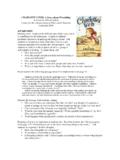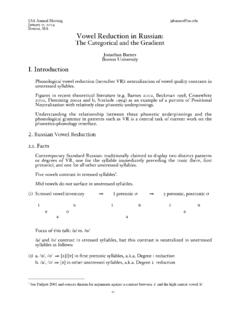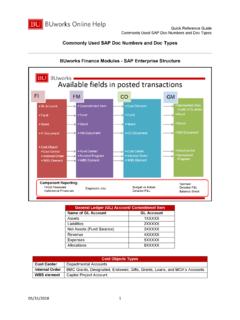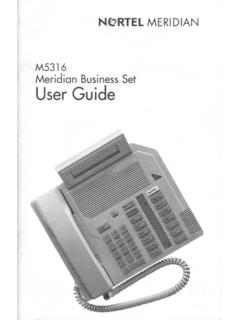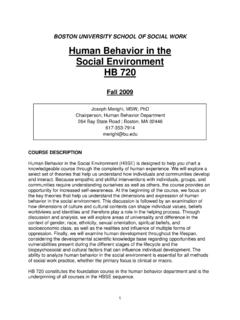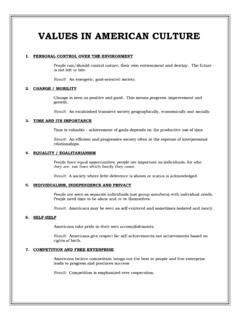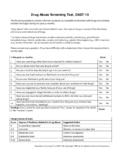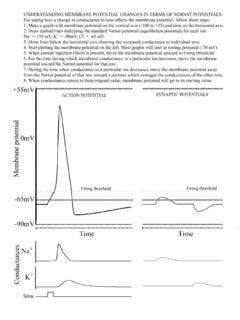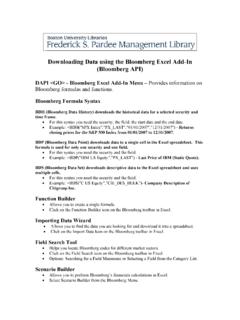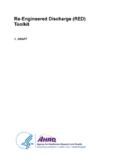Transcription of THE VETERANS RAND 12 ITEM HEALTH SURVEY (VR-12): …
1 1 THE VETERANS RAND 12 ITEM HEALTH SURVEY (VR-12): WHAT IT IS AND HOW IT IS USED Sheikh Usman Iqbal, , , William Rogers , Alfredo Selim, , Shirley Qian, , Austin Lee, , Xinhua S. Ren, James Rothendler, , Donald Miller , and Lewis E. Kazis, Section for Pharmaco-Outcomes and Epidemiology Center for HEALTH Quality, Outcomes and Economic Research CHQOERs VETERANS Administration Medical Center, Bedford MA. And Center for the Assessment of Pharmaceutical Practices (CAPP) Boston University School of Public HEALTH The SF-36 and SF-12 are registered trademarks of the Medical Outcomes Trust.
2 Overview The VETERANS RAND 12 Item HEALTH SURVEY (VR-12) is a brief, generic, multi-use, self-administered HEALTH SURVEY comprised of 12 items. The instrument is primarily used to measure HEALTH related quality of life, to estimate disease burden and to evaluate disease-specific benchmarks with other populations. The 12 items in the questionnaire correspond to eight principal physical and mental HEALTH domains including general HEALTH perceptions; physical functioning; role limitations due to physical and emotional problems; bodily pain; energy-fatigue, social functioning and mental The 12 items are summarized into two scores, a Physical HEALTH Summary Measure {PCS-physical component score} and a Mental HEALTH Summary Measure {MCS-mental component score}.
3 These provide an important contrast between physical and psychological HEALTH status. *Change Physical and Change Emotional scales are not used in the calculation of the PCS and MCS summary measures 1. Your HEALTH 2a. Moderate Activities 2b. Climbing Several Stairs 3a. Accomplished Less 3b. Limited in Kind 4a. Accomplished Less 4b. Limited in Kind 5. Pain Interference 6a. Peaceful 6b. Energy 6c. Down- Hearted 7. Interference in Social Activities 8. Change in Physical HEALTH 9. Change in emotion healthGeneral HEALTH Physical Functioning Role-Physical Role-Emotional Bodily Pain Vitality/Mental HEALTH Social Functioning Change Physical Change Emotional Physical HEALTH (Summary Measure) Mental HEALTH (Summary Measure) VR-12 Schematic Model ITEMS SCALES ** Arrows to the summary measures reflect the greater disposition to the appropriate physical or mental HEALTH summary measures 2 3 Development The VR-12 was derived from the VETERANS RAND 36 item HEALTH SURVEY (VR-36)
4 , historically called the VETERANS SF-36 (Kazis et al 2006 1,2). The VR-36 was adapted from the RAND SF- 36 version questionnaire, and spans the range of HEALTH domains from physical to psychological HEALTH status. In comparison with the RAND SF-36, there are two modifications made in the VR-36. The first modification is an increase in the number of response choices for the role physical (RP) and role emotional (RE) items from a two point yes/no choice to a five-point likert scale (no, none of the time , yes, a little of the time , yes, some of the time , yes, most of the time , yes, all of the time ).
5 The second modification is the use of two items to assess HEALTH change, one focusing on physical HEALTH and one on emotional problems, in contrast to the one general change item in the RAND SF-36 (Kazis et al 2004 3,4). The VR-36 has been widely used, distributed and documented in the VETERANS HEALTH Administration (VHA) with close to 2 million questionnaires administered nationally in six national surveys since 1996. The changes to the SURVEY have increased the overall precision of the instrument and the discriminant validity of the physical and mental component summary scales (Kazis et al 2006 5).
6 The VA has adopted the VR-36 as a primary measure of HEALTH related quality of life and functional status measures, and a secondary measure of disease burden and for risk adjustment purposes for comparisons made among VETERANS . The VR-12 was developed using extensive research and normative data from the VR-36 in the VHA. It consists of the 12 most important items from the VR-36 for construction of the physical and mental component summary scales. The 12 items in the VR-12 explain a great deal of the variability in the VR-36. The scoring of PCS and MCS is based on weights derived from the VR-36 administered to million veteran enrollees with 877,775 respondents in the 1999 Large HEALTH SURVEY of Veteran Enrollees ( VETERANS HEALTH Study), the largest federal SURVEY ever conducted in the VA.
7 The weights were obtained from the large sample in the VA SURVEY to create PCS and MCS scores. That is, dummy indicators were defined for response choices for each of the 12 items in the VR-12 and these were then entered into multiple regressions to predict PCS and MCS scores based on the VR-36. The resulting weights, and the constant term, can be used to compute PCS and MCS scores from the VR-12. The two summary component scales derived from the VR-12 explained over 90% of the variance in PCS and MCS scales of the VR-36 used in the 1999 Large HEALTH SURVEY of VETERANS Enrollees (Jones et al 2001 6).
8 Applications and Usability Applications of the VR-12 The VR-12 has been administered in national VA surveys in 1997 and 1998 to over 60,000 patients. Since 2002, the VA has administered the VR-12 to approximately 432,000 patients annually as part of its quality management program ( SURVEY of HEALTH Experiences of Patients, SHEP). As of spring 2006, the US Centers for Medicare and Medicaid Studies (CMS) has been administering the VR-12 to Medicare enrollees as part of the Medicare HEALTH Outcomes SURVEY (Medicare HOS ), designed to monitor the quality of care in Medicare Advantage Plans (MAP) (Kazis et al 2004 4).
9 The VR-12 has been included in HEDIS 2007 ( HEALTH Plan Employer Data and Information Set), as part of the performance measurement data set most widely used and disseminated in the managed care industry. When administered to a patient population in time , the VR-12 provides a reliable and valid measure of HEALTH status and case mix adjustment. It has been an important source, for the office of Quality and Performance at the VHA, to monitor the process and outcomes of care at the program and system levels. Similarly, CMS uses the VR-12 to assess the physical and mental HEALTH functioning of its enrollees and to generate information for payment adjustments.
10 4 The effectiveness of the VR-12 in estimating HEALTH status and disease burden along with providing a rubric for risk adjustments has been demonstrated in several publications spanning multiple disease systems (Kazis et al 2006 5). Subsequently, it has provided applications in the VA for conducting medication effectiveness studies based upon non-randomized prospective quasi-experimental designs that approximate real world clinical conditions. Such applications using the VR-12 have been widely published for medication studies in those diagnosed with hypertension, osteoarthritis, low back pain, depression, and schizophrenia.
